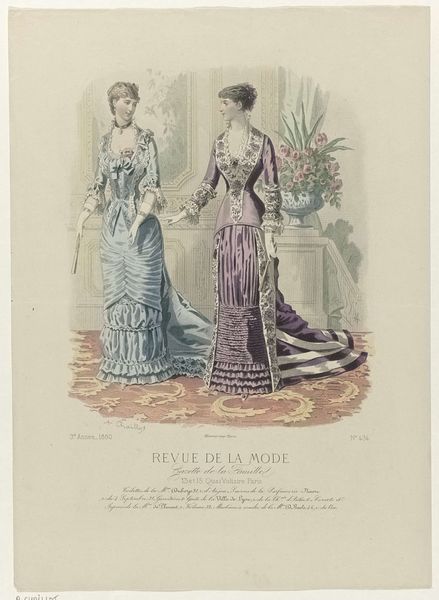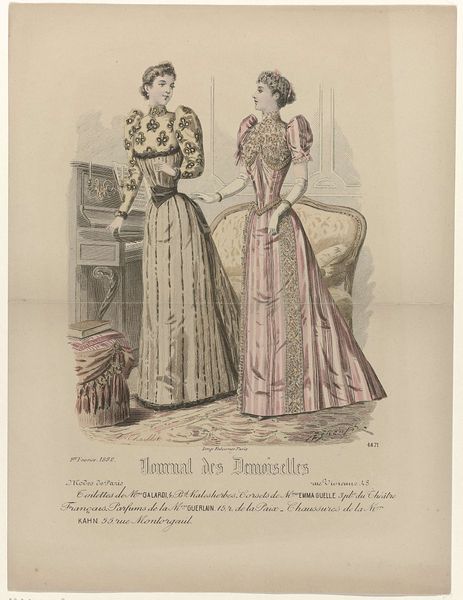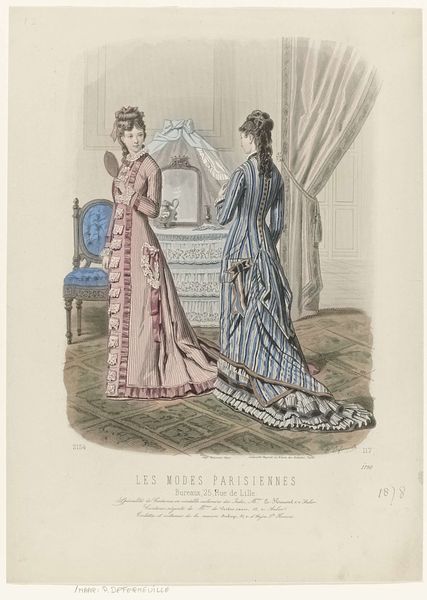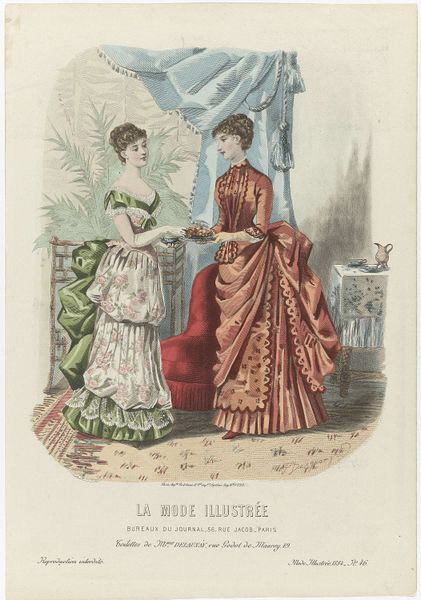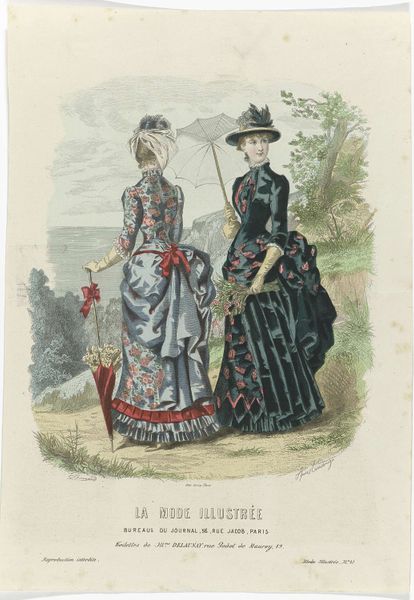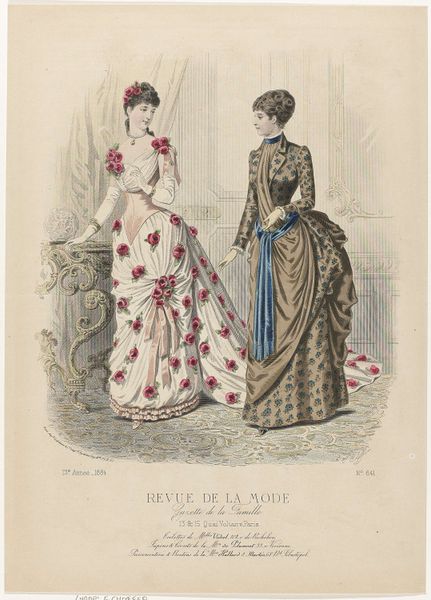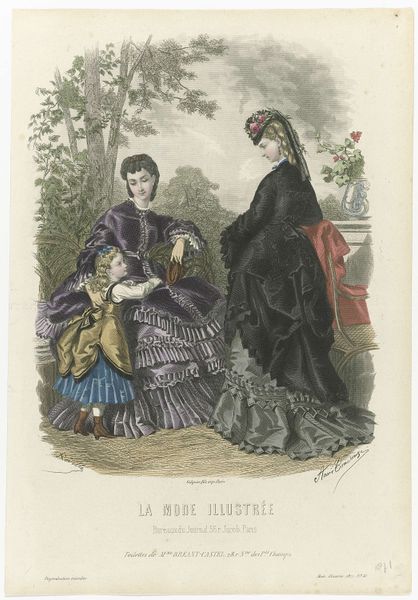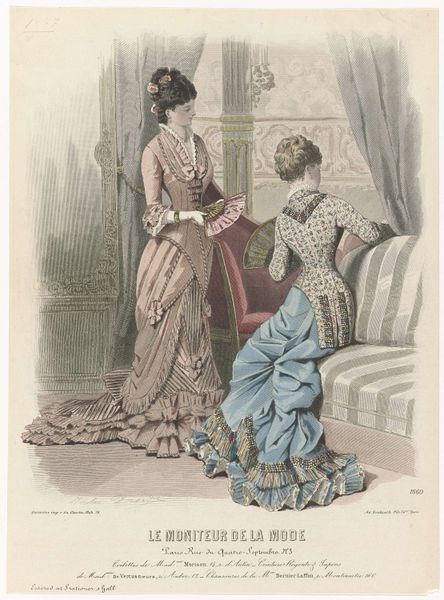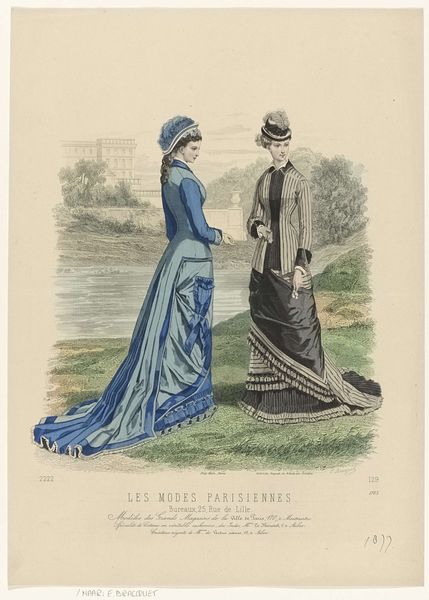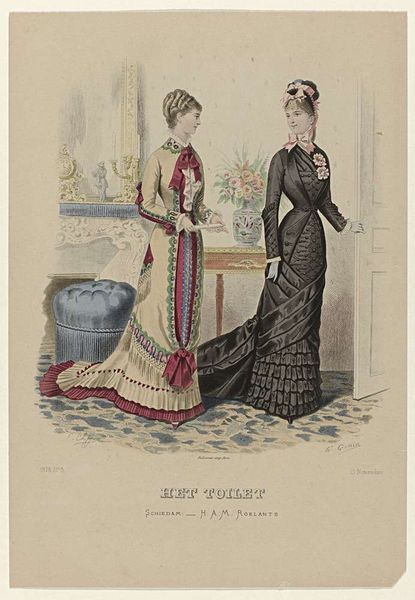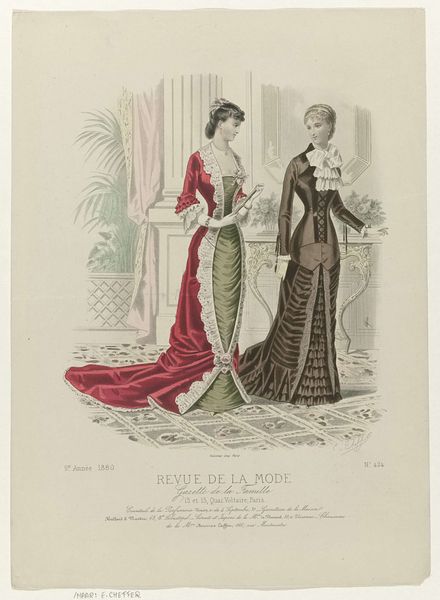
Revue de la Mode, Gazette de la Famille, dimanche 17 juillet 1881, 10e année, No. 498: Toilettes de Mme Cavally (...) 1881
0:00
0:00
Dimensions: height 370 mm, width 268 mm
Copyright: Rijks Museum: Open Domain
Curator: The artist E. Cheffer created this watercolor print entitled "Revue de la Mode, Gazette de la Famille" in 1881. The image depicts two women in fashionable dresses, set against a backdrop that suggests a sophisticated urban setting. Editor: My initial reaction is one of admiration for the level of detail. The fabrics look luxurious, the lines are crisp, and the colour palette, while muted, speaks to the period's aesthetic sensibilities. I wonder what the realities were of creating dresses like these. Curator: It's intriguing how such fashion plates were circulated through publications. Consider this particular "Revue de la Mode," essentially an early magazine focused on fashion. It would have been distributed widely, shaping ideals and consumption patterns related to textiles and dressmaking across different social strata. Editor: Precisely! We see a snapshot here of the Parisian clothing industry—the labor, the materials sourced from global trade networks. Take, for instance, the bustle on the one dress; the yards of fabric required represent a substantial amount of work in production and also considerable expenditure for the consumer. Were such styles widely available? Curator: While perhaps not widely affordable across all classes, publications like this promoted the *idea* of accessibility. Readers, including seamstresses, could glean inspiration to reproduce or adapt styles for themselves and their clients. The illustration thus played a direct role in circulating fashion trends throughout various social spheres. Editor: And the printmaking process itself is key to understanding its dissemination. The very act of reproducing Cheffer’s watercolor as a print transformed a unique artwork into a standardized, marketable item, available to a much broader audience than the original could ever reach. How was the publication itself distributed, what did it cost, what was the print run? All these aspects shaped its impact on social habits. Curator: Ultimately, this piece provides not just a pretty picture, but a visual entry point into understanding 19th-century fashion dissemination and its related industries, connecting the dots between high art, popular culture, and economic forces at play. Editor: Right, it is fascinating to look beyond the elegant facade of these figures and understand the machinery of design, production, and marketing that underpins the image. The history lies in its materiality and modes of dissemination.
Comments
No comments
Be the first to comment and join the conversation on the ultimate creative platform.
